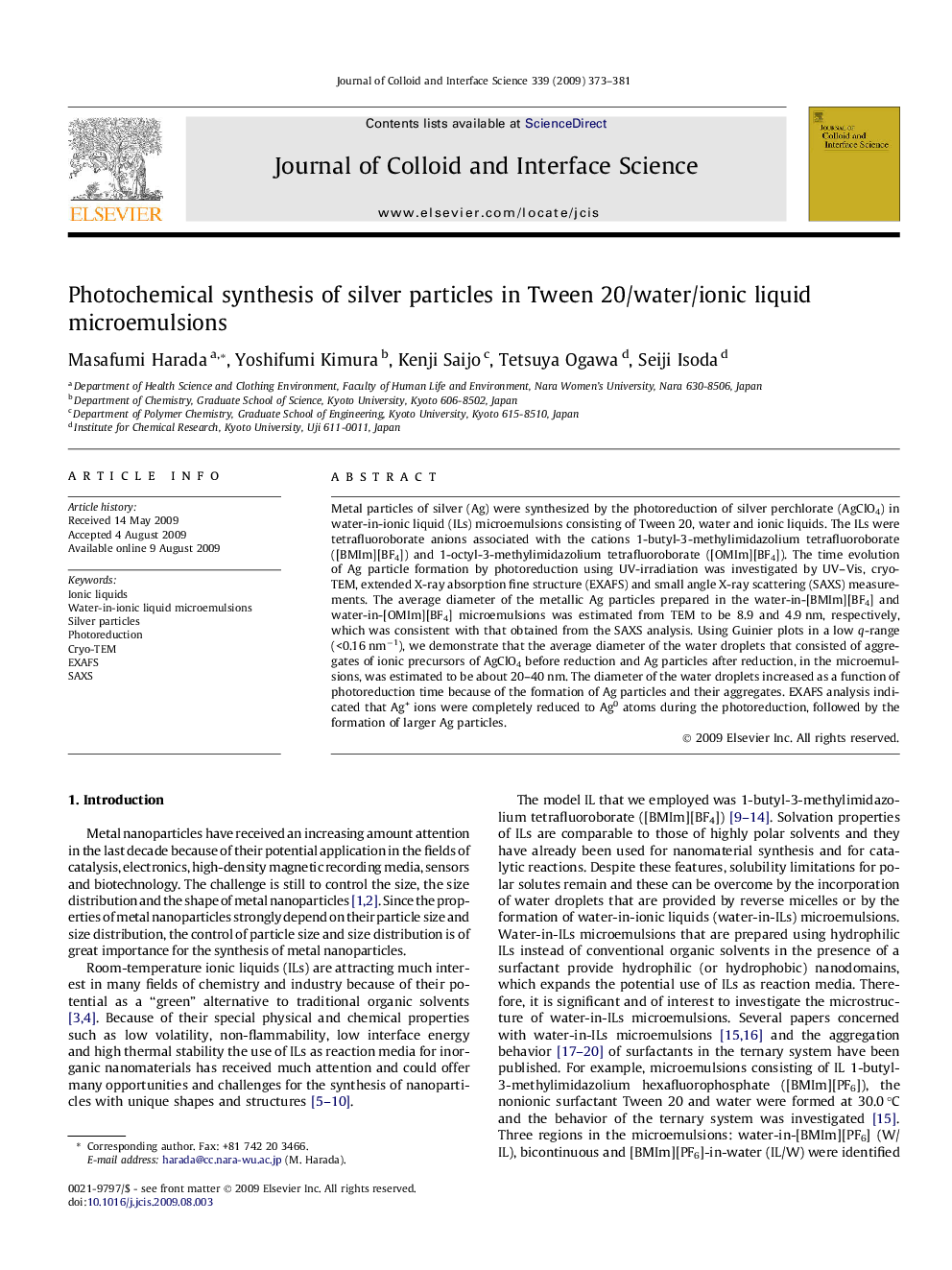| Article ID | Journal | Published Year | Pages | File Type |
|---|---|---|---|---|
| 610278 | Journal of Colloid and Interface Science | 2009 | 9 Pages |
Metal particles of silver (Ag) were synthesized by the photoreduction of silver perchlorate (AgClO4) in water-in-ionic liquid (ILs) microemulsions consisting of Tween 20, water and ionic liquids. The ILs were tetrafluoroborate anions associated with the cations 1-butyl-3-methylimidazolium tetrafluoroborate ([BMIm][BF4]) and 1-octyl-3-methylimidazolium tetrafluoroborate ([OMIm][BF4]). The time evolution of Ag particle formation by photoreduction using UV-irradiation was investigated by UV–Vis, cryo-TEM, extended X-ray absorption fine structure (EXAFS) and small angle X-ray scattering (SAXS) measurements. The average diameter of the metallic Ag particles prepared in the water-in-[BMIm][BF4] and water-in-[OMIm][BF4] microemulsions was estimated from TEM to be 8.9 and 4.9 nm, respectively, which was consistent with that obtained from the SAXS analysis. Using Guinier plots in a low q-range (<0.16 nm−1), we demonstrate that the average diameter of the water droplets that consisted of aggregates of ionic precursors of AgClO4 before reduction and Ag particles after reduction, in the microemulsions, was estimated to be about 20–40 nm. The diameter of the water droplets increased as a function of photoreduction time because of the formation of Ag particles and their aggregates. EXAFS analysis indicated that Ag+ ions were completely reduced to Ag0 atoms during the photoreduction, followed by the formation of larger Ag particles.
Graphical abstractThe formation process of Ag particles with 2–12 nm in diameter in water-in-[OMIm][BF4] microemulsions in the presence of Tween 20 is monitored by cryo-TEM and SAXS measurements.Figure optionsDownload full-size imageDownload as PowerPoint slide
